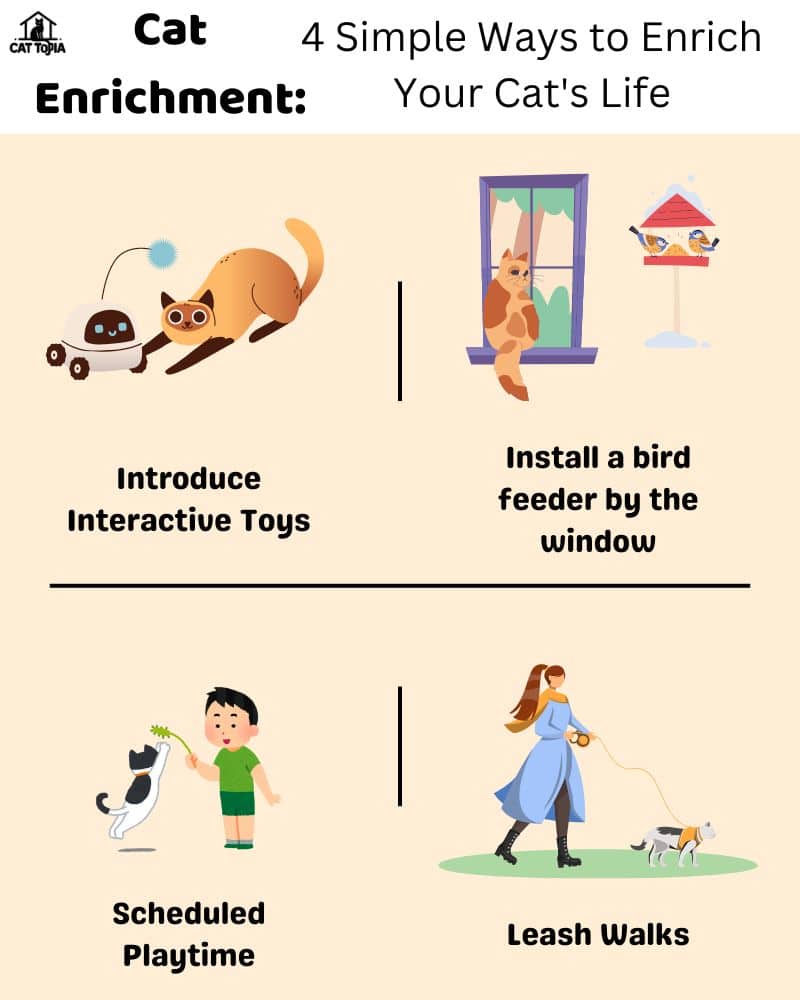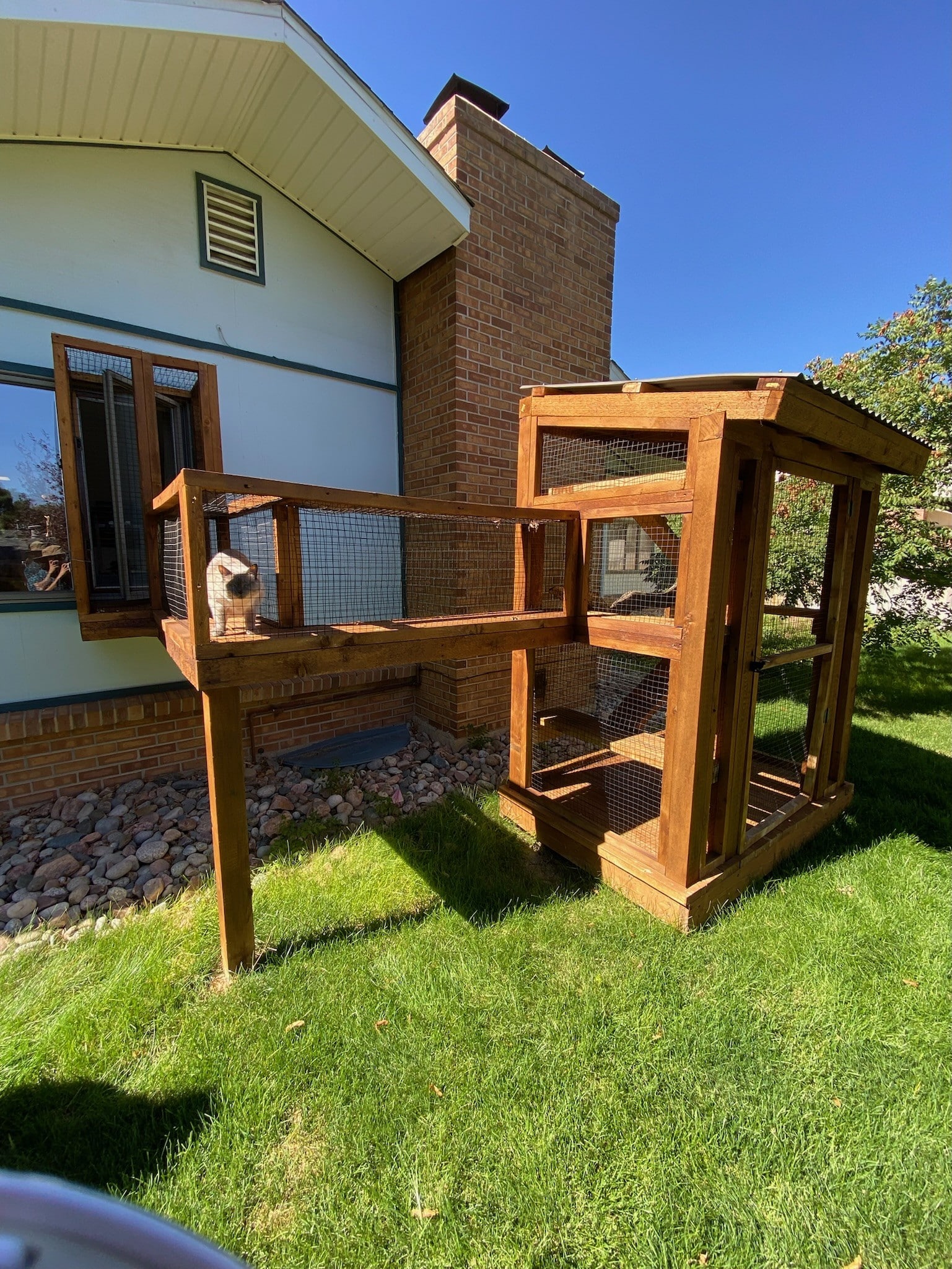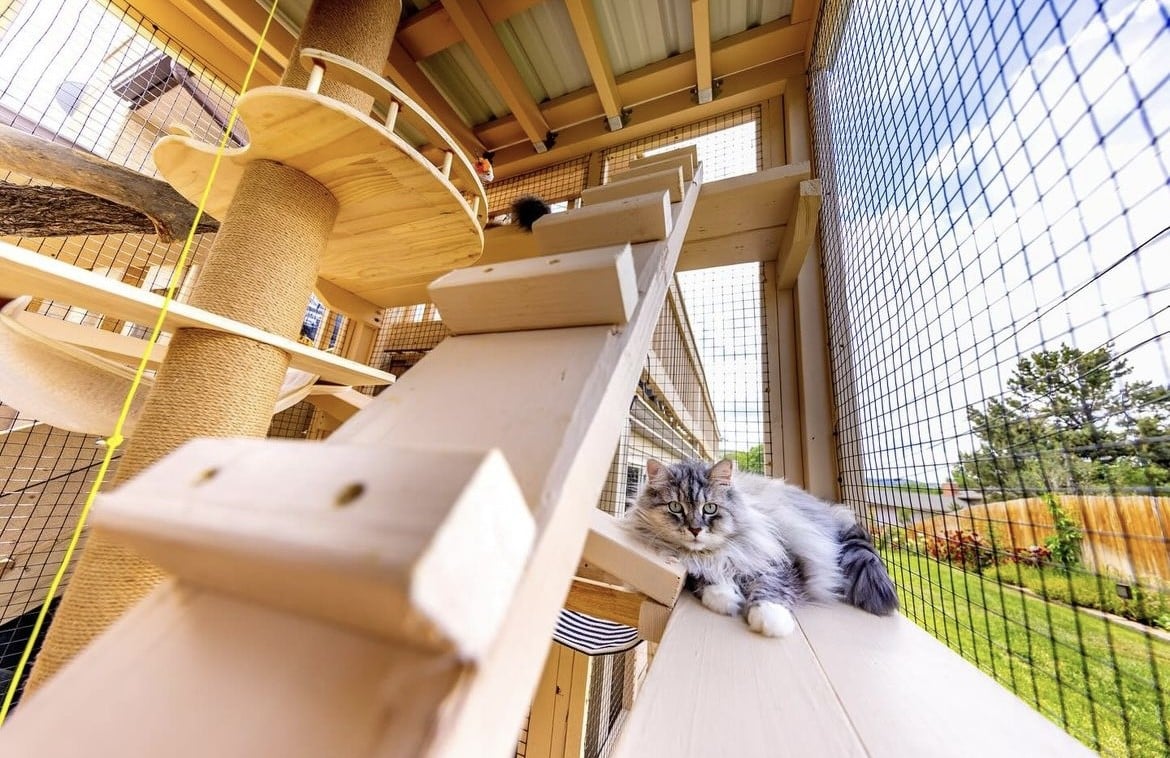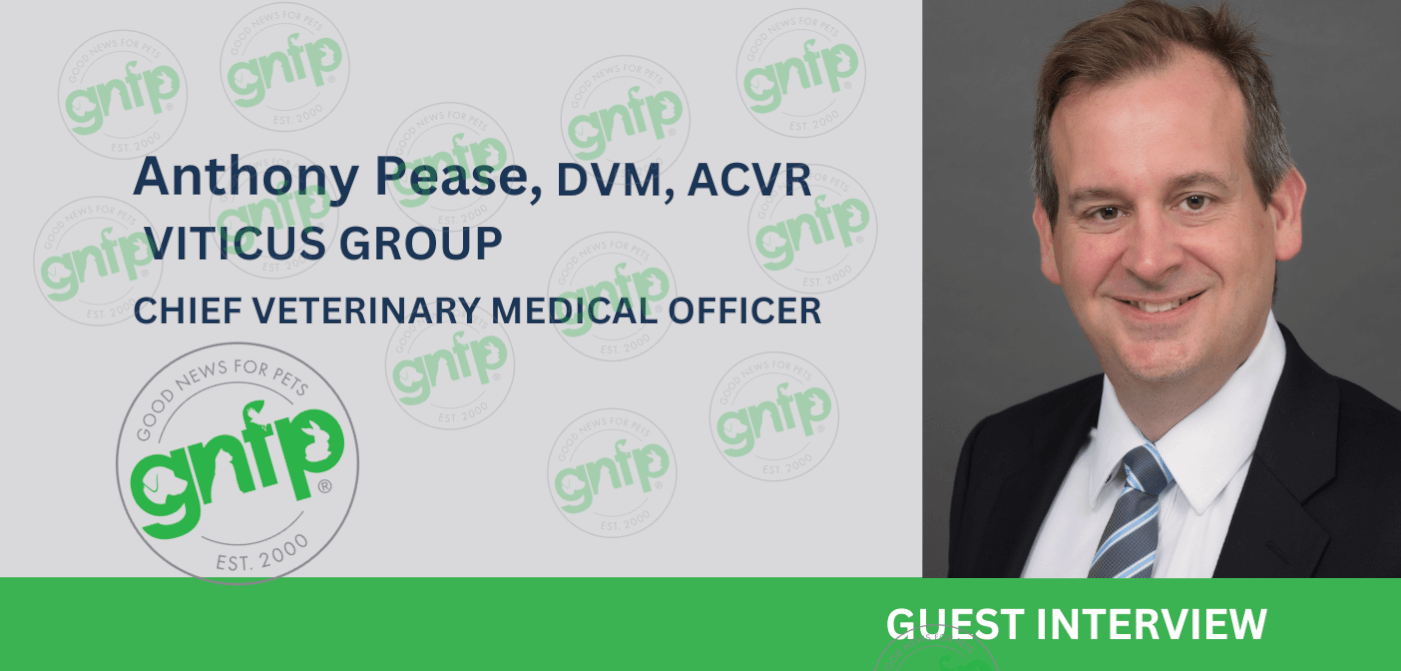This post may contain affiliate links. We may earn money or products from the companies mentioned in this post.
Having a pregnant dog welcome a new litter into the world is one of the greatest things a dog owner can experience.
If you are ready to experience all the joys of doggy pregnancy, you may be wondering: can dogs be too old to get pregnant, and how old can dogs still have puppies?
I was very surprised to discover that dogs are never too old to have puppies!
Yup, you read that right—in fact, there is no such thing as doggy menopause and female dogs go into heat during their whole lives.
However, although dogs are naturally capable of breeding and having puppies well into their senior years, that doesn’t mean that they should.
Pregnancy can be tough even for young dogs that are in their prime, but older dogs are at a much higher risk of health problems and stillborn puppies.
Whether you want a new puppy or you are a breeder thinking about retiring your dogs, it is important to consider the ages of your male and female dogs before breeding them!
QUICK TIP: If you’re going to have a litter of puppies make sure you have all the essential puppy supplies. Our #1 puppy product we recommend you send home with all new puppy owners is the Calmeroos Puppy Heartbeat Toy.
In this article, I will tell you everything you need to know about responsible breeding and dog fertility.
What Is The Oldest Age At Which A Dog Can Have Puppies?
Before I go any further into the topic of when is a dog too old to have puppies, let’s touch on the subject of when is a dog considered to be a senior in need of special care.
Knowing that your pooch is an elderly citizen will help you determine whether it is safe and appropriate for your dog to get pregnant in the first place.
Most dogs enter their senior years when they are around seven years old; however, the aging process is slightly different for small and large breed dogs.
A tiny Chihuahua, for example, is considered a senior when they reach 11 years of age. On the other hand, a giant breed such as a Great Dane is considered a senior by the time they are five years old.
The aging difference between smaller and larger breeds is mainly due to their size. Several studies have confirmed that larger breeds tend to age much faster than their smaller counterparts.
Therefore, how old is too old for a dog to have puppies is directly related to the size of that particular dog.
Unlike people, female and male dogs technically remain fertile their whole lives. However, their fertility and ability to whelp healthy puppies decrease as they get older.
Let’s see at what age dogs can have puppies, starting with male dogs.
What Is The Oldest Age A Male Dog Can Sire Puppies?
A healthy male dog can still sire puppies until very old age. In fact, most professional breeders will retire male dogs much later than their females.
According to AKC rules, you can register a litter of puppies sired by a male dog that was no more than 12 years old at the time of mating.
In practice, most reputable breeders will retire their male dogs when they are between 10 and 12 years old.
However, just because a male dog is over 12 doesn’t mean that he is incapable of siring puppies. Older male dogs are still capable of impregnating females, but they aren’t as fertile as they once were and may need more tries to get a female dog pregnant.
Age is just one of several factors that affect the ability of a male dog to sire puppies. The age at which a male dog can have puppies also depends on the quality and quantity of its sperm.
So, many professional breeders will check the sperm count of their male dogs regularly, at least once a month, to see if they are still capable of siring litters.
Additionally, breeders will check many other things to determine whether their male dogs are too old for breeding and ready to be retired. A low conception rate is another sign that a dog is getting too old to sire puppies regularly.
This means that a male dog fails to get a female dog pregnant during ideal conditions: one mating per day and a completely healthy female.
Furthermore, a breeder may decide that the male dog is too old to sire puppies if their partner continually produces smaller litters, or if the puppies are weak and sick.
What Is The Oldest Age A Female Dog Can Have Puppies?
QUICK RECOMMENDATION: If you’re thinking about having a litter of puppies make sure you get all your whelping supplies well in advance. Our #1 pick is the Deluxe Pro Whelping Kit for puppies. Check out our Whelping Supplies Checklist for more of our favorites.
You may be surprised to learn that female dogs don’t go through menopause and can technically get pregnant throughout their whole lives.
This can come as a big shock, especially if you think that it’s safe for your older female pooch to go off-leash and hang out with other dogs in the park.
According to the AKC rules, a dam must not be more than 12 years of age at the time of mating, if you want to register the litter. However, a lot of breed clubs, including the UK Kennel Club, set eight years as a maximum limit for breeding female dogs.
When it comes to nature’s order, female dogs can still get pregnant even if they are older than 12 and remain fertile their whole lives.
However, at this grand age, most female dogs have birthing difficulties, and serious complications are often seen during labor.
When they become pregnant, older female dogs may have trouble giving birth, and seeing stillborn puppies in a litter is unfortunately quite common.
Additionally, older dogs may have trouble producing enough milk to nurse their puppies, who often die if not bottle-fed by their human caregivers.
Due to all these risks and complications, most reputable breeders decide to retire their dams when they are around five or six years old.
To determine whether or not to retire a female dog from a breeding program, the breeders consider the same factors as for male dogs.
The breeder will compare conception rates, litter sizes, the dam’s health, complications during delivery, and the time needed for recovery.
Taking all of these criteria into account can give you a good idea of whether it is safe to continue breeding your female dog or not.
Our Golden Retriever, Raven was a breeding dog. She was retired by her breeder when she was 6 years old at which time we officially adopted her.
If you own a female dog, the most important thing to remember is that she can get pregnant at any time during her life. Although older dogs are less fertile than their younger counterparts, there is still a risk of unwanted pregnancy.
So, you will have to watch your pooch and prevent any unwanted mating or opt to have her spayed if her age and overall health don’t pose any risk for the procedure.
Now that you know that dogs can become pregnant their entire lives, talk with your vet about the best ways to prevent unwanted pregnancies.
QUICK RECOMMENDATION: If you have intact male and female dogs a good way to manage them when your female is in heat is with barriers like pet gates and dog crates. We use these tools to help keep our dogs separate.
At What Age Can Dogs Start To Have Puppies?
If the fact that dogs can have puppies throughout their lives catches you off guard, you’ll be even more surprised to learn that most dogs reach sexual maturity while they are still puppies. You read that right: Your cute, fluffy puppy can have puppies of its own!
Once they reach sexual maturity, male dogs can mate at any time, even every day! Females, on the other hand, can mate only when they are in heat, which usually happens twice a year.
However, some dogs can go into heat up to four times a year, while others will be ready to mate once a year, depending on their size and breed.
Here’s the earliest age a dog can have puppies, starting with male dogs again.
At What Age Do Male Dogs Become Sexually Mature?
Male dogs generally become fertile earlier than their female counterparts, usually when they are around five or six months old.
Toy and small breeds such as Chihuahuas become sexually mature earlier than large breeds. which become fertile when they are between seven and nine months old.
However, while they are technically able to impregnate a female dog, you shouldn’t allow males to mate until they are physically mature. In most cases, you should wait until your dog is at least one year old to mate him with a female.
Keep in mind that large and giant breeds need more time to fully grow, so you should wait until your pooch is 18 to 24 months old to breed him for the first time.
OUR EXPERIENCE: We’ve purchased from Labrador and Golden Retriever breeders. The breeders we’ve worked with wait until their dogs are around 2 years old and passed all their health clearances before breeding them.
If you decide to use your male dog for siring litters, you will first have to ensure that he is completely healthy and fertile. Your vet can help with that and provide health clearances that your dog is a qualified stud dog ready for breeding.
Once a male dog reaches sexual maturity, he remains fertile his entire life. However, their sperm count tends to be low during the beginning and the end of their reproductive cycle.
That’s why it’s important to wait until your puppy becomes fully grown before first breeding and avoid breeding dogs that are too old.
At What Age Do Female Dogs Become Sexually Mature?
Unlike male dogs, who can mate literally every single day once they reach puberty, female dogs can breed only when they are in heat.
Female dogs usually reach sexual maturity when they are six months old, but smaller breeds can go into heat as early as four months of age.
Even though they are fertile and able to get pregnant, it’s not recommended to breed female dogs during their first heat cycle. As with male dogs, you should wait until your female is fully grown before attempting to mate her for the first time.
The size and breed of your dog will determine when the best time is to mate your female for the first time. Smaller breeds reach adulthood earlier than their larger counterparts and can consequently become pregnant safely much earlier.
After having their first estrus, also known as heat or season, female dogs usually go into heat every six months until they get old.
However, this time frame can vary from one dog to another and can depend on the size of the dog. Generally, smaller dogs go into heat more regularly than larger breeds and can produce more litters during their lifetime.
The heat cycle is divided into four stages: proestrus, estrus, diestrus, and anestrus. In the proestrus phase, which lasts around nine days, a female dog has a bloody vaginal discharge and attracts males, but won’t breed with them.
The estrus phase also lasts around nine days, at which time the female is fertile and will be allowed to be mounted by a male dog. In most cases, ovulation happens within the first 48 hours of the estrus phase, but this can vary greatly.
The diestrus phase lasts 60 to 90 days, during which time the dog’s reproductive system is under the control of the hormone progesterone.
This phase happens whether or not the dog has gotten pregnant, and some dogs may develop signs of false pregnancy during this stage.
Lastly, the anestrus phase is the time when a female dog can no longer become pregnant and is a period without sexual activity. In most cases, this stage lasts between three to four months.
Although some become fertile much earlier, the AKC rules don’t permit the registration of any litters from dams that are younger than eight months old at the time of the mating.
And while old female dogs can have puppies, the female’s fertility starts to drop after five years of age.
Female dogs that are too young or too old can’t handle the strain the pregnancy puts on their bodies, which often leads to birthing complications, premature labor, and stillborn puppies.
That’s why it is imperative that you don’t start breeding your dam too early or continue to do so when she gets old.
FAQs About How Old A Dog Can Be And Still Have Puppies
Can a dog be too old to have puppies?
Technically, both female and male dogs can have puppies their whole lives. However, a dog’s fertility drops after the age of seven, and most female dogs can’t become pregnant quite as often as they used to.
The same happens to male dogs, and while they are still able to have puppies their fertility rate isn’t as high as it used to be.
The actual labor is also more difficult and risky for older dogs and is commonly accompanied by complications. Older dogs also may have problems producing milk and nursing their puppies.
What is the age limit for breeding a dog?
The AKC rules don’t allow registration of any litter of a dam that is less than eight months old or more than 12 years old at the time of mating.
Additionally, any litter that is sired by a male dog that is less than seven months old or more than 12 years old at the time of mating can’t be registered with the AKC.
On the other hand, the UK Kennel Club, the VHD in Germany, and many other clubs list the maximum age limit at eight years for female dogs.
Can a 9-year-old dog have puppies?
A 9-year-old dog can technically get pregnant and give birth to a litter of puppies. However, most reputable breeders won’t breed such an old female dog because of the risks associated with the pregnancy and birthing complications.
However, an older female dog can absolutely get pregnant if mounted by a fertile male during her heat cycle. To prevent any health problems and unwanted pregnancies, keep a close eye on your dog while in heat and consider spaying her.
Is it bad for a 1-year-old dog to have puppies?
Most dogs reach puberty and become fertile when they are six months old, although they shouldn’t have puppies until they are fully grown. Small breeds reach adulthood when they are one year old and can safely have puppies if they are done growing.
However, large and giant breeds continue growing until they are between 18 and 24 months old, and they shouldn’t have puppies until they reach adulthood.
A one-year-old Great Dane is still a puppy, and it would be bad for a growing pup to get pregnant and have to take care of a litter of newborn puppies.
Conclusion
Knowing how old dogs can be to have puppies is an important piece of information if you plan to breed your dog at some point in their life.
While technically dogs are fertile and can have puppies their whole lives, older female dogs are at risk of premature labor, stillborn puppies, and birthing complications.
To ensure that your dog’s pregnancy goes well, here’s what you need to remember:
- Males can sire litters until they are between 10 and 12 years old
- Breeders retire female dogs when they are five to six years old
- Don’t breed your dog until it is fully grown
While it is hard to imagine that dogs can have puppies their whole lives, you should be careful not to breed your dog when they are too young or too old.
Before breeding your pooch, talk with your vet and have your dog throughout examined.
Are you a breeder?
Have you worked with or bought a dog from a breeder?
If so, do you know how old their breeding dogs are?
Tell us about your experiences in the comment section below.
Save To Pinterest
UPDATE: This post was originally published on May 10th, 2021. We periodically update blog posts with new experiences and information to keep them as relevant as possible.
Top Picks For Our Puppies
- BEST DOG CHEW
We Like: Beef Collagen Sticks – All of our pups love to bite, nip, and chew. We love using Collagen Sticks to help divert these unwanted behaviors.
- BEST PUPPY TOY
We Like: Calmeroos Puppy Toy w/ Heartbeat and Heat Packs – Perfect for new puppies. Helps ease anxiety in their new home.
- BEST DOG TREATS
We Like: Crazy Dog Train-Me Treats – We use these as our high-value treats for our guide dog puppies.
- BEST FRESH DOG FOOD
We Like: The Farmer’s Dog – A couple months ago we started feeding Raven fresh dog food and she loves it! Get 50% off your first order of The Farmer’s Dog.
Check out more of our favorites on our New Puppy Checklist.
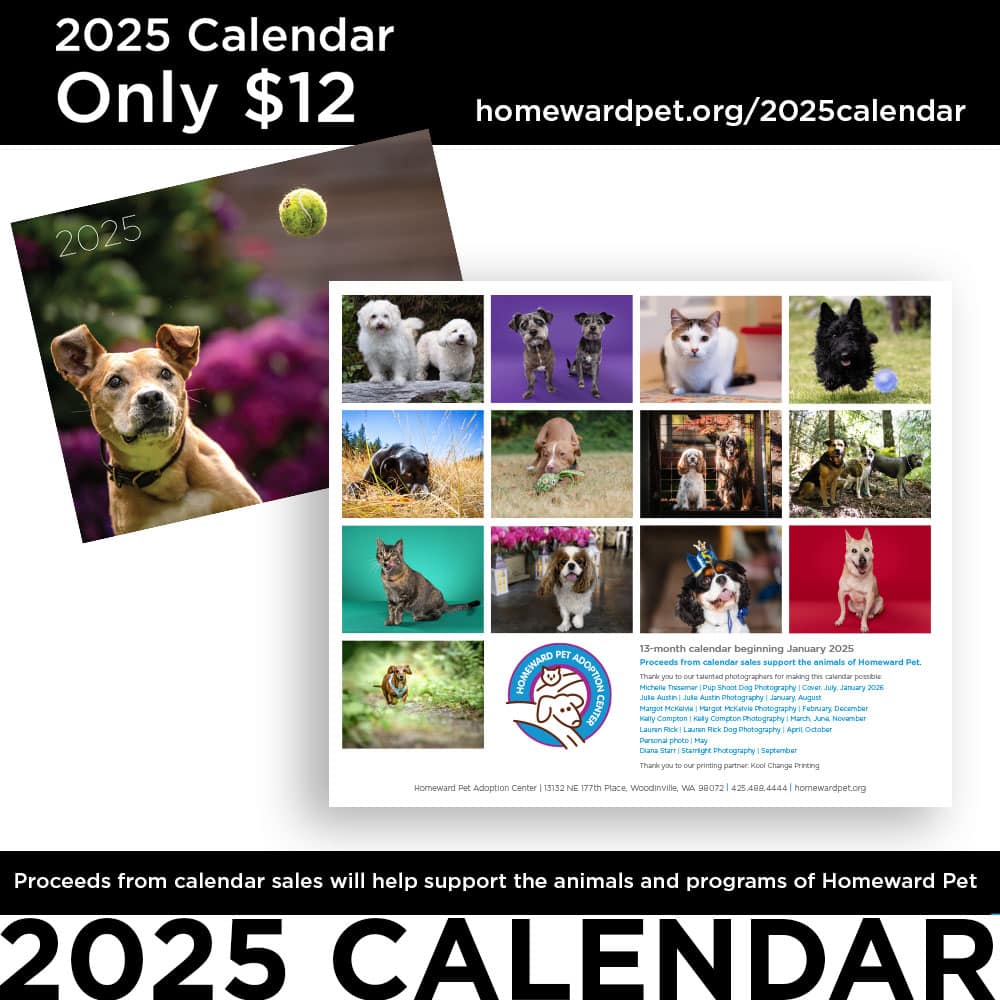

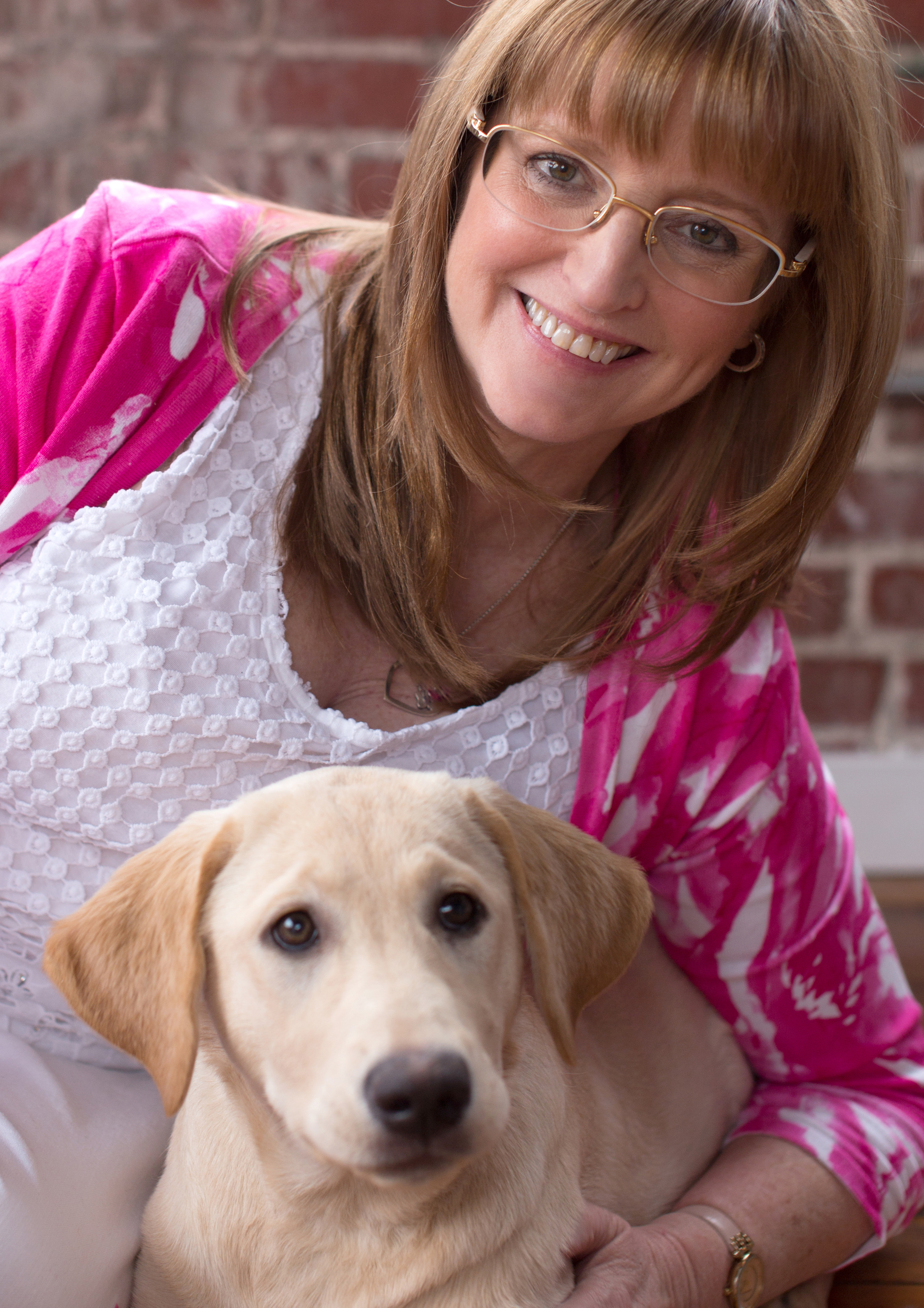
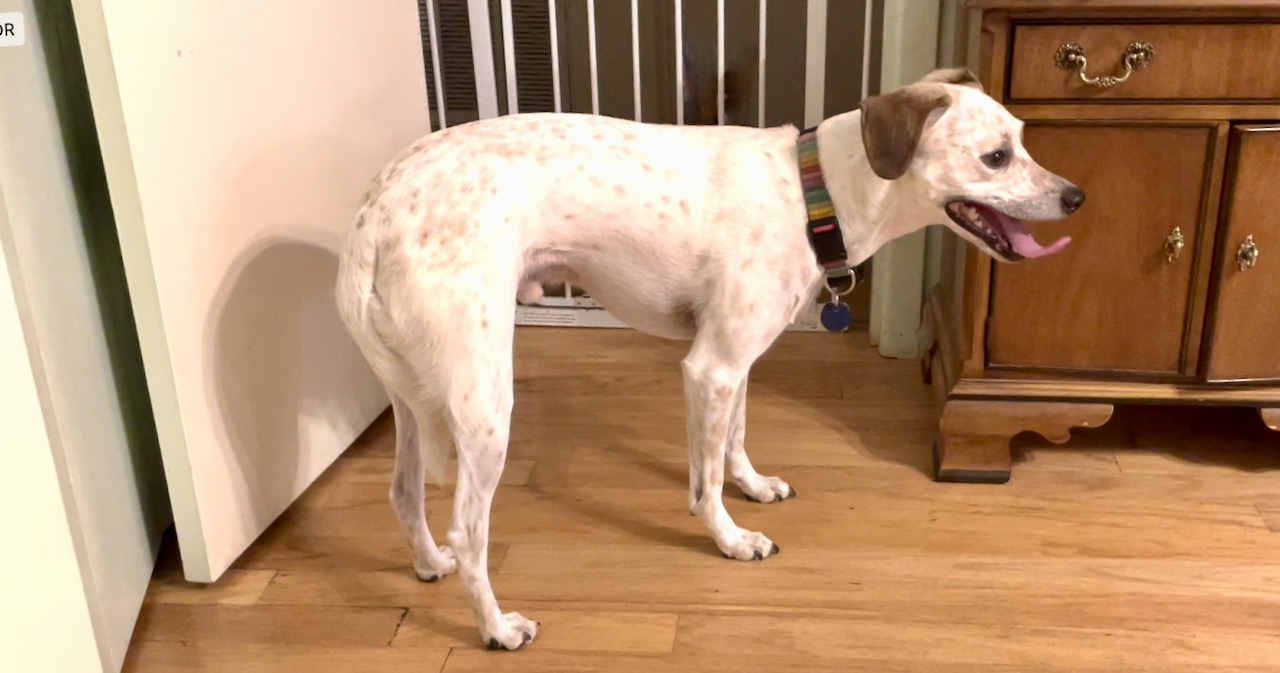






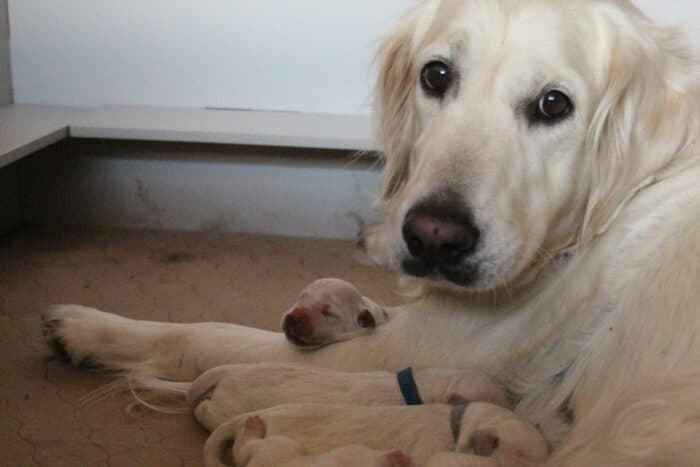




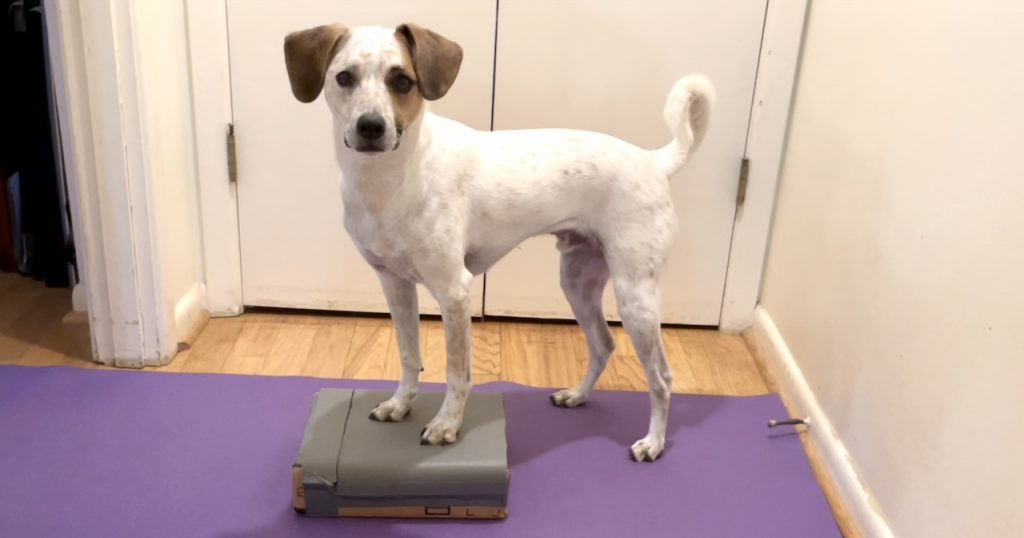













 For cats, the right environment and mental engagement are crucial to staying healthy and happy. Just like humans, cats need more than food, water, and shelter—they need mental and physical enrichment to truly thrive. Without proper enrichment, cats can experience boredom, which may lead to serious health issues. Let’s explore ways owners can add extra enrichment into their lives, such as through a catio.
For cats, the right environment and mental engagement are crucial to staying healthy and happy. Just like humans, cats need more than food, water, and shelter—they need mental and physical enrichment to truly thrive. Without proper enrichment, cats can experience boredom, which may lead to serious health issues. Let’s explore ways owners can add extra enrichment into their lives, such as through a catio.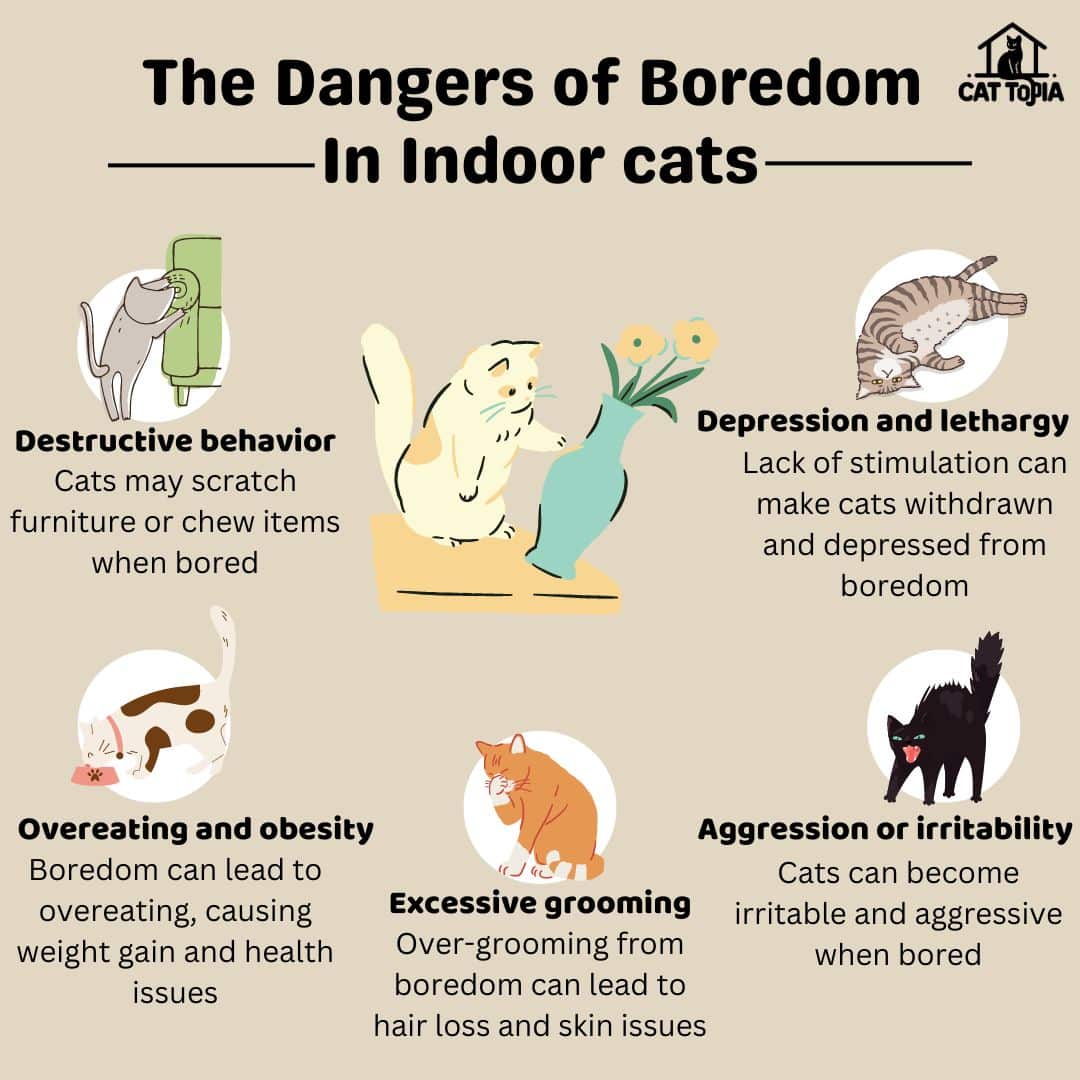 Providing regular, engaging activities helps prevent these issues, making for a happier and healthier pet.
Providing regular, engaging activities helps prevent these issues, making for a happier and healthier pet.